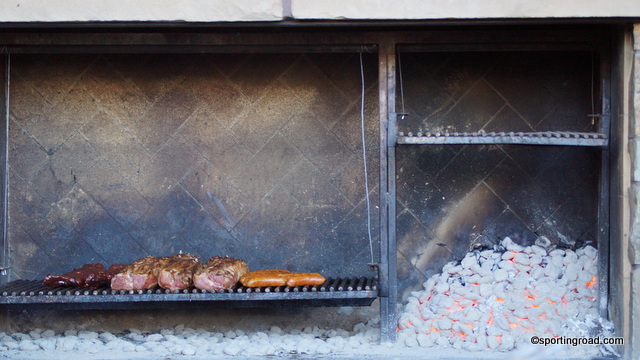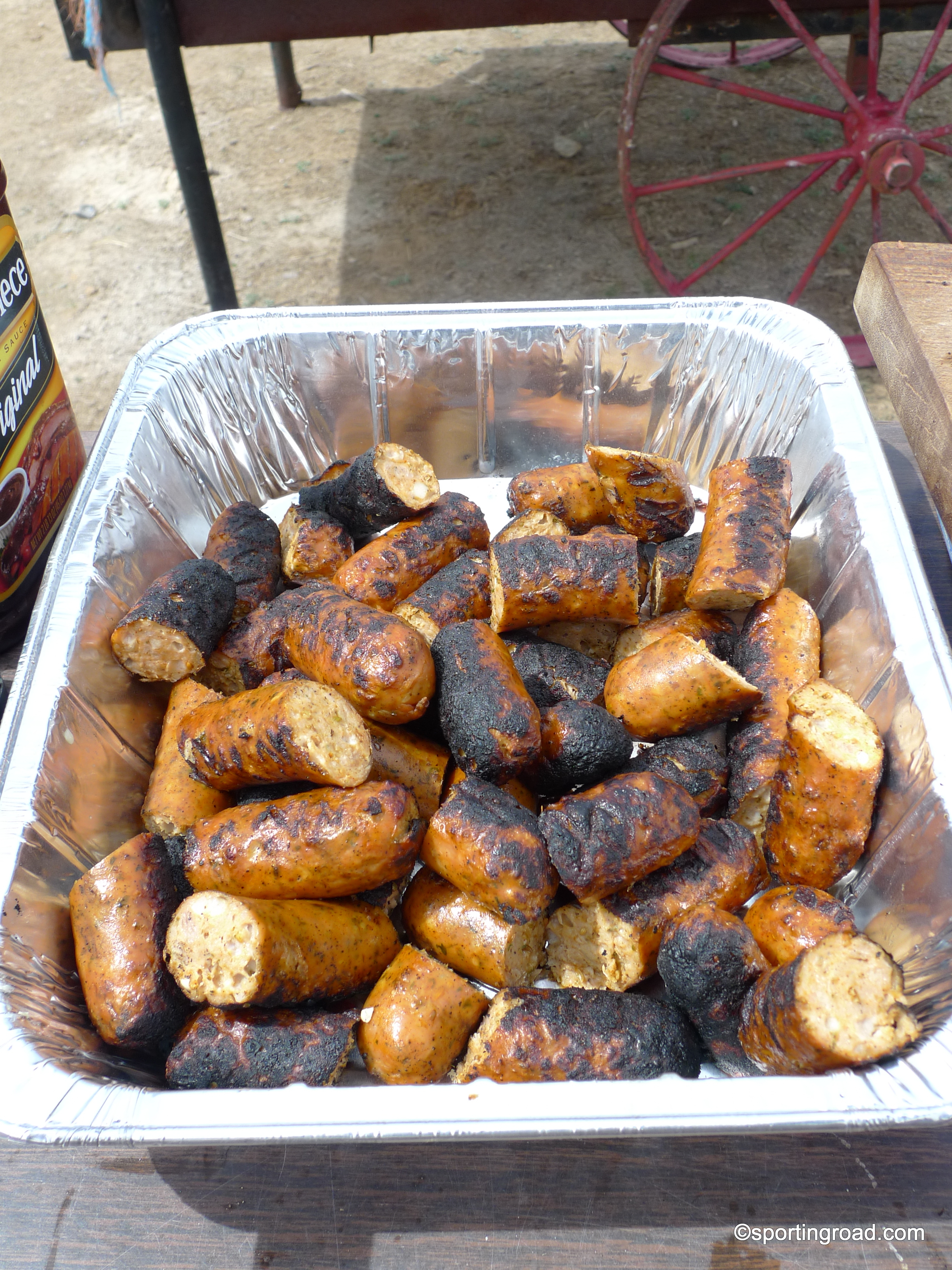Choripanes were invented in Argentina, but similar sandwiches are made in Uruguay, Brazil, and Chile. Choripán is a portmanteau of chorizo and pan –sausage and bread — but that’s not all there is to it. Chimichurri is what makes the sandwich famous.
Chimichurri is a fresh salsa based on oil, vinegar, garlic and parsley, and depending on the cook recipes sometimes include onions or shallots, red pepper flakes, oregano, bay lea, cilantro and parsley. It’s a very flexible recipe depending on what fresh ingredients are on hand.
Chorizo Argentino can sometimes be found at the Fiesta grocery chain or other Mexican food markets. If you can’t find that, it’s very similar to Italian sausage and those will work fine. Mexican chorizo is too heavily seasoned and doesn’t work as well with the chimichurri. The sausages are cut in half lengthwise and then in the middle, left together so that you have two chunks lying flat.
For the bread, be sure to use a crusty French baguette type dinner roll. This is important so that the bread can stand up to the sausage juices and the hefty slathering of chimichurri.
Serve with a side of Provoleta (Grilled Provolone Cheese)
From the NY Times, “In Argentina, a thick slice of provoleta, a provolone-type cheese, is cooked over coals until browned and bubbling, then served as a mouthwatering appetizer with bread. It’s a bit like fondue or queso fundido but not quite as molten and melty. Typically, a large meal, or asado, of grilled sweetbreads, sausages and various cuts of beef follows, but provoleta makes a great snack with drinks, regardless of what you serve afterward. For ease of preparation, provoleta can be cooked in a cast-iron pan, under the broiler or baked in a hot oven. If you want success at cooking provoleta the traditional way, directly on the grill, leave the cheese uncovered at room temperature for several hours or overnight to dry the exterior a bit. A dab of chimichurri salsa is usually served alongside.”
But back to provoleta. In the United States, imported Italian provolone is your best choice. Provolone is a long, cylindrical cheese; what you want is a perfectly round piece sliced at least an inch thick. Go to an Italian deli or a good cheesemonger and ask to have it cut. Let it come to room temperature, uncovered, allowing the exterior to dry a bit. Then dust both sides with oregano and crushed red pepper.

In Argentina (and Uruguay), provoleta is tossed on the grill like a steak, but unless you are very experienced, you risk losing the cheese that way, watching helplessly as it melts and drips into the fire below. Amateurs are well advised to cook the cheese in a small cast-iron pan over the coals. But a good version can be made on the stovetop, under the broiler or in a hot oven.
In Chile, they serve these up differently as well and call them churrascos. If you’re well-versed in Brazilian cuisine, you might assume Chilean churrasco involves a barbecue affair — but that’s not quite the case. In Chile, this term refers to a sandwich, albeit one featuring grilled meat. Described as a “sandwich paradise” on the Chilean tourism website, a churrasco is likely to exceed your expectations, especially considering the Chilean affinity for bread.
A churrasco essentially comprises a steak sandwich, and its name can quickly change with the addition of various ingredients. For instance, topping your grilled meat with cheese transforms it into a barros luco. Introduce tomatoes and string beans (a beloved Chilean topping), and you’ve got yourself a chacarero. Whether you opt for the classic chili pepper sauce or pebre, or you prefer to load it up with avocado, tomatoes, and mayonnaise in the Italiano style, the churrasco offers a delightful array of options to suit every taste.

